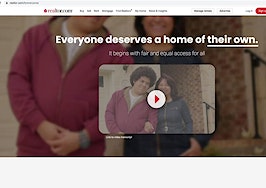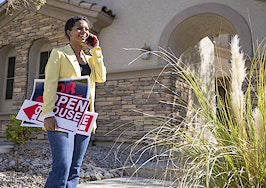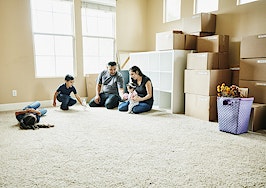For many Latino households, buying a home is an extended family affair. Hispanic homeowners are more likely than people of other races or ethnicities to receive financial help with housing from family members, according to a new report from real estate brokerage Redfin.
The brokerage noted that the Hispanic homeownership rate has risen faster than the rate for Black or white Americans in recent years, in part due to familial support. The homeownership rate for Hispanics was 45.4 percent in 2014 and increased to 50.1 percent in 2020, Redfin said, citing census figures. During the same six-year period, the Black homeownership rate rose from 43 percent to 45 percent and the white homeownership rate rose from 73 percent to 75 percent.
In a survey fielded the first week of June, Redfin surveyed 1,509 homeowners: 385 who said they were Hispanic, 238 who said they were Black, 499 who said they were white and 387 who identified as “all other races.”
More than half of Hispanic homeowners, 52 percent, reported that they lived with family or friends without paying rent to save for housing costs, compared to 39 percent of Black respondents and 38 percent of white respondents.
“Hispanic people in the U.S., especially those who are undocumented, tend to have less access to credit and higher debt compared to other racial or ethnic groups, making them more dependent on support from family to buy a home,” said Sebastian Sandoval-Olascoaga, an economist at Redfin, in a statement.
“With those limitations, support from family and social networks — such as living with family or friends without paying rent — allows Hispanic people to save money for a down payment or monthly mortgage costs. That ability to rely on family is one of multiple reasons why the Hispanic homeownership rate is steadily rising.”
Hispanics were also more likely than respondents of other races or ethnicities to have gotten direct help making rent or mortgage payments from friends or a romantic partner (42 percent), parents (38 percent) or other family members (27 percent). They were also more likely to have been helped indirectly with housing costs by receiving other financial help from family members (37 percent).

Source: Redfin
Many of the people providing financial help with housing likely live in the home with the homeowner. Just under half, 44 percent, of Hispanic homeowner respondents said they have adult relatives living in their home, compared to 38 percent of Black homeowners and 25 percent of white homeowners.
Those adult relatives were most likely to be parents: 29 percent of Hispanic homeowners said one or more parents were living with them, compared to 24 percent of Black homeowners and 16 percent of white homeowners.

Source: Redfin
Hispanic homeowners were the most likely to report to have made financial sacrifices to afford their first home: 44 percent said they worked longer hours, 39 percent took an extra job, 38 percent drove an older vehicle for an extended period, 27 percent moved to a less expensive area and 25 percent lived in a small home for an extended period. Only 10 percent of Hispanic homeowners reported making no sacrifices to buy their first home compared to 14 percent of Black homeowners and 23 percent of white homeowners.

Source: Redfin
“For many Hispanic Americans, making social or personal sacrifices is a necessity if they want to buy a home,” Sandoval-Olascoaga said. “That’s especially true this year, as Hispanic people were more likely than people of other races to lose their jobs due to the pandemic. Plus, undocumented immigrants are unable to access financial help from the government and may have to rely on family, adding to the need for Hispanic families to make economic sacrifices.”













